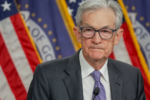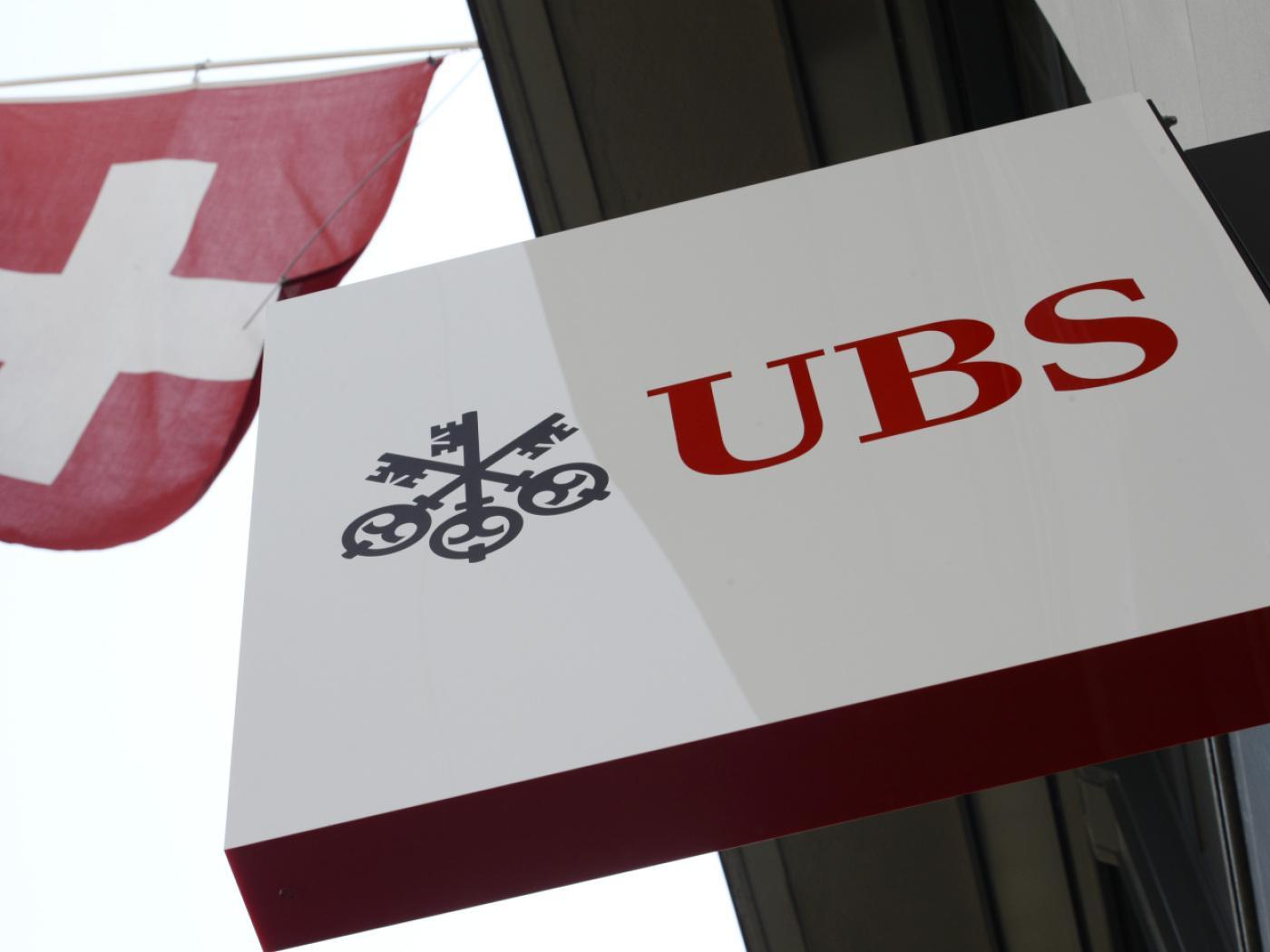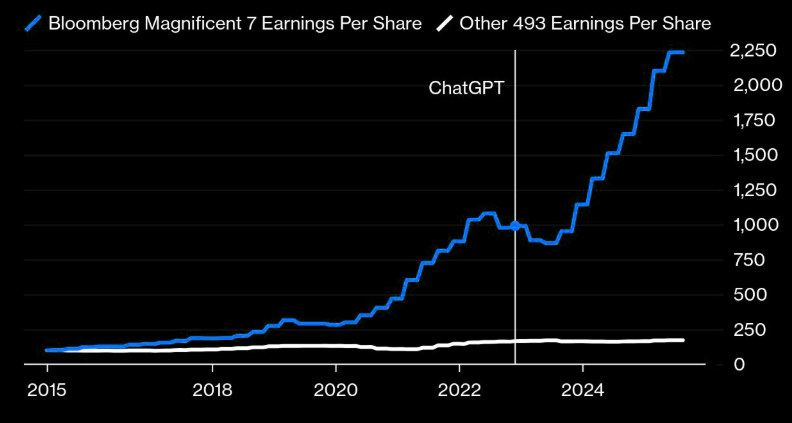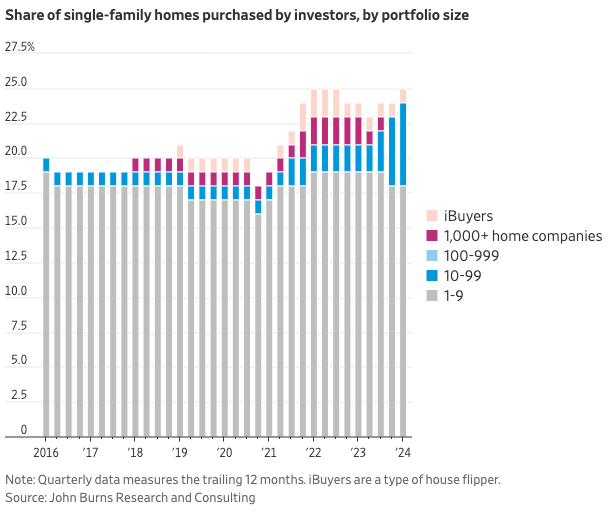Under other circumstances, the softer than expected US inflation readings and the subsequent sharp drop in US interest rates would have weighed on the US dollar. Instead, the greenback managed to do well, especially against the euro, sterling, and Japanese yen. The 0.6% rise in the Dollar Index was the biggest gain in two months. The Fed's hawkish hold, with the median dot shifting to one cut this year from three in March (and last December) means that some other central banks may cuts rates one or two more times before the Fed cuts. In addition, political anxiety stemming from the snap French election for which President Macron's party and allies could come in third place in the first round has seen not only the French premium widen over Germany but others in the European periphery saw the markets demand a greater premium. In the UK, some polls warn that the Conservatives could also be relegated to third place in the July 4 election. A political compromise in South Africa, which saw the ANC retain the presidency and the speaker of the National Assembly helped lift the rand, which was the only emerging market currency that rose against the dollar last week. The Mexican peso remains volatile as president-elect Sheinbaum endorse judicial reform.
The political issues will linger in the week ahead, while the economic highlights include the Reserve Bank of Australia and Bank of England meetings. Neither central bank has prepared the market for a rate cut. A hawkish hold is more likely from the RBA, where the central bank indicated there was a discussion about rate hikes at recent meetings. The swap market has discounted about a 50% chance of a cut this year. The Bank of England is closer to delivering its first cut. There is a nearly a 50% chance of a cut in August and around an 85% chance by the end of September. Indeed, the market is pricing in almost an 80% chance that two cuts will be delivered in H2. Brazil's central bank will also stand pat at it June 19 meeting. It has cut the Selic target rate by 325 bp starting last August. Inflation improvement may be stalling, and the currency has fallen to 18-month lows. It is not just that interest rate policy is on hold, but that swaps market is pricing in that the next move will be a hike. US economic data highlights include May retail sales and industrial production. They likely increased sequentially after a soft April. The flash June PMIs will be released at the end of the week.
United States: Our hypothesis has been that while the US economy is gradually slowing, much of the high-frequency data in April seemed to exaggerate it. Most of the May surveys and the jobs data showed improvement sequentially. This will likely continue this week with May retail sales and industrial production. They were both flat in April, but the US economy has not stagnated. The median forecasts in Bloomberg's survey calls for a 0.2% increase in retail sales and a 0.4% rise in industrial output. At 15.9 mln (SAAR), we already know that auto sales were stronger than expected, and the best since April 2023. perhaps helped by lower prices. May housing data will likely be mixed but in the opposite direction. Housing starts, which rose 5.7% May, are expected to have slowed a little, while existing home sales fell by nearly 2% in April, are expected to have risen slightly. At last week's FOMC meeting, four officials thought no rate cuts this year would be appropriate. Seven thought one cut may be necessary, and eight said two rate cuts may still be delivered. It appears that the softer CPI and PPI played a bigger role in the market's reaction function than the Fed's forward guidance. The market is pricing a smidgeon more than two cuts this year. After the employment data on June 7, the market had one cut and about a 40% chance of a second cut.
The Dollar Index pushed above 105.70 before the weekend, its best level since May 9, and fulfilled the (61.8%) retracement of the retreat since peaking on April 16 near 106.50. The momentum indicators are trending up and five-day moving average is above the 20-day moving average and both are rising. The gains are fraying the upper Bollinger Band but the political uncertainty in Europe and the BOJ's reluctance to move quicker to normalize policy has helped the greenback shrug off the largest weekly decline in two-year rates (~20 bp) since January. European political considerations have spurred an even sharper drop in German two-year yield. As a consequence, the US premium over Germany widened by almost 15 bp last week, the most in two months. The nearly 200 bp premium has not been seen since the end of April. Initial support for DXY is seen around 105.15. A return toward the highs cannot be ruled out.
United Kingdom: The UK reports May CPI on June 19 followed by the Bank of England decision the following. The year-over-year headline inflation rate may fall below 2% for the first time in three years but do not expect a below target CPI will spur the Bank of England into action. What is happening is the last year's jump is being unwound, and with the May report, that process is nearly over. Consider that in H1 23, UK CPI rose at an annualized rate of 6.6%. In H2 23, UK inflation rose at an annualized rate of 1.2%. In May 2023, CPI rose by 0.7% and this will drop out and be replaced with a number closer to half of it. The central bankers are well aware of this base effect and that services inflation remains elevated at 5.9% in April (6.9% in April 2023). Core inflation has also been stickier than the headline and in April slipped below 4% for the first time since October 2021. The Bank of England itself forecasts CPI to finish this year at 2.5%. Its forecast for 2025 of 2.3% implies little fresh progress. The swaps market has the first cut fully discounted in November and has about an 80% of a second cut. As recently as mid-May, the market had two cuts fully discounted and around a 40% chance of third cut. May retail sales are due the day after the BOE meeting. After the outsized 2.5% drop in April retail sales (reported on a volume basis not price), a recovery is likely. Still, it will not change views much that after a 0.6% expansion in Q1 24 (following two contracting quarters) the UK economy has lost some momentum this quarter.
Sterling rallied to $1.2860 after the soft US CPI report, its best level in three months but the gains were completely unwound in the following two sessions. And a new low for the week was recorded ahead of the weekend, slightly above $1.2655. It is the lowest level in a month. The momentum indicators are headed lower, and the five-day moving average crossed below the 20-day moving average for the first time since May 1. Follow-through selling could see sterling move toward $1.2550-80. The $1.2720-30 area may offer initial resistance.
Australia: The Reserve Bank of Australia meets a several hours before the Bank of England on June 20. The swaps market has about a 50% chance of an RBA cut this year. .Last week's labor market data did not change many minds. The unemployment rate eased to 4.0% (from 4.1%), and the economy created nearly 42k full-time jobs in May. Australia has grown 160k full-time jobs in the first five months of the year, down slightly from the 175k increase in full-time positions in the Jan-May 2023 period. RBA Governor Bullock has eschewed her reputation as a dove with a rate hike late last year. Growth is slowing (RBA says from 2.0% in 2023 to 1.3% this year, slightly slower than the IMF's projection of 1.5%). That growth is sufficient for the RBA to remain focused on price pressures and the underlying measures averaged a 4.2% in the first quarter.
The Australian dollar recovered from its first close below $0.6600 since May 9 after the US jobs report and traded briefly above $0.6700 after the US CPI. However, the greenback's strength proved too much, and the Aussie fell back below $0.6600 before the weekend, but recovered to settled near $0.6620. Support is seen in the $0.6575-80 area. A break would signal a test on $0.6540-45, where the (50%) retracement of the rally from the year's low (~$0.6365) set April 19 and the 200-day moving average are found.
China: The PBOC set the one-year Medium-Term Lending Facility Rate before the markets open on Monday, June 17. The softer than expected CPI reported last week (-0.1% month-over-month and unchanged at 0.3% year-over-year, has spurred some speculation of a cut. It has been at 2.50% since last August. Many economists look for more monetary stimulus but the swaps market demurs. Beijing seems more interested increasing the volumes rather than lowering the price. Also, China's macroeconomic data from May are due around the same time. If the data are favorable, many observes cast doubts on its authenticity. If the data is weak, many observers use it to argue for structural reforms, which often sound like regime change. In any event, and despite numerous efforts to support the property market, new and used houses prices likely continued to fall. Property investment continues to slump and residential property sales off nearly a third this year through April. China is expected to report a small slowing in the pace of growth industrial production and a slightly quickening in the pace of retail sales.
The PBOC continues to moderate the dollar's rise against the yuan. It appears to be making a modest effort. The dollar rose to CNY7.2560 at the end of last week, its best level since last November. Claims that because China runs a large external surplus or that it has plenty of reserves, the yuan should not come under selling pressure, seems, frankly naive. The same argument could be made about the euro and yen, which are more under-valued than the yuan. We have been looking for the dollar to move back into its previous range (~CNY7.25-CNY7.30). Against the offshore yuan, the dollar is bumping against CNH7.2750. It has only settled above it once this year (April 16). Last year's high was a little below CNH7.37.
Japan: Following last week's BOJ meeting, Japan reports May merchandise trade balance and CPI in the week ahead. May's trade balance typically deteriorates from April (18 times in the past 20 years) but almost always improves in June. In the first four months of the year, Japan has recorded an average monthly trade shortfall of JPY558 bln, despite the yen's extreme under-valuation. Still, it is about a third of the deficit that was recorded in the first four months of 2023 and less than half of the deficit in the Jan-Apr 2022 period. The CPI will be reported at the end of the week. It may pose headline risk, but the thunder has been stolen by the Tokyo CPI, which was released a few weeks ago. Tokyo's CPI often runs a little below the national pace, but the direction is similar. Tokyo's May CPI rose to 2.2% form 1.8% and the core rose to 1.9% from 1.6%. This warns of an uptick in the national rate to around 2.7% (from 2.5%) and the core rate to 2.4% (from 2.2%). The swaps market is pricing in almost a two-thirds chance of a 10 bp hike next month.
The yen was unable to make benefit much from the largest decline in the US 10-year yield (~22 bp) since last December. After the US jobs data on June 7, the dollar settled at JPY156.75. It traded to JPY158.25 at the end of last week after the BOJ stood pat and did not reduce its JGB purchases. That was the highest the dollar has been since the intervention at the end of April when the dollar rose above JPY160. The US 10-year premium over Japan is below 330 bp, the lowest weekly close this year and the nearly 20 bp of narrowing last week was most since mid-December. This coupled with the dollar re-entering the previous intervention area will likely turn the market more cautious about extending the dollar's rally.
Eurozone: The eurozone reports April's current account and construction figures next week. The flash PMI is due at the end of the week. However, political issues likely trump economics. Macron's call for snap elections has roiled the French capital markets and peripheral European bond markets. It also weighed on the euro that had already come off a cent from $1.09 area after the US jobs data. France's right-wing Republican Party may work with Le Pen's National Rally party in the June 30 election. Maron faced a difficult fiscal challenge in any event. In April, the government revised its estimate of this year's fiscal shortfall to 5.1% of GDP from 4.4%, and it may still be underestimating it. The EC projects the French budget deficit, which rose to 5.5% of GDP in 2023 would narrow to 5.3% this year and 5.0% in 2025. In late May, S&P downgraded France's sovereign rating to AA- (matching Fitch's rating, and one step below Moody's). Even before a new European Commission is in place, the EU indicated that it would impose new duties starting next month of as much as 38.1% on EV imports from China, depending on the brand and its estimate of unfair subsidies. Some estimates suggest that the even with the tariffs, several Chinese brands may still see a higher profit in Europe than they do in their domestic market. China indicated it will retaliate and has threatened measures to hit European agriculture, airplanes, and autos with large engines. Beijing had previously launched investigations into some types of European alcohol.
The euro shed around a cent last week, the largest decline in two months. There are two considerations. First, the market is pricing in a second ECB rate cut before the Fed cuts rates once. And although, US rates fell last week, German rates fell faster, and the two-and 10-year differentials widened in the dollar's favor. Part of the reason for this reflects the second consideration: Politics. The uncertainty and disruption triggered by Macron's call for snap legislative elections and some indication that his party (and allies) may slump into third place raised anxiety in the eurozone, for which German debt is still seen as a safe haven. This is also consistent with the performance of the Swiss franc, which appreciated by slightly more than 0.7% against the dollar and nearly 1.7% against the euro. The euro had been trading near $1.09 before the US employment data on June 7 and traded below $1.0670 before the weekend. Nearby support is seen around $1.0650, and a break of it, targets the low for the year set in mid-April near $1.06. The $1.0720 area offers initial resistance.
Canada: A key challenge for the Canadian dollar is that the market thinks the Bank of Canada may cut rates two more times before the Fed cuts once. The swaps market is discounting about a 2/3 chance that it follows up last month's cut with another move in July.. A third cut this year being delivered is fully discounted for early Q4. The upcoming high-frequency data, which includes May housing starts and existing home sales, April portfolio flows, and retail sales may not offset the disappointing jobs data (35.6k loss of full-time jobs and the continued rise in unemployment). The key is the May CPI report (June 25) following the softer than expected April reading. The US dollar held below CAD1.38 last week and settled near session lows before the weekend (~CAD1.3730). Initial support is seen around CAD1.3700 and then last week's low near CAD1.3660. Still, only a break of CAD1.3600 would be meaningful from a technical perspective. The swaps market has the Bank of Canada cutting rates once and maybe two more times before the Fed cuts once.
Mexico: The peso's headlong plunge continued. Investors and other market participants have been scrambling to the exits following the recent election outcome and fear of the reforms being contemplated, which may erode the checks on political power provided by the judiciary. After plummeting 7.5% in the first week after the election, the peso fell another 3.2% last week before stabilizing with the help of implicit intervention threats, which we argue is a low rung on an escalation ladder. In the 24 months through May, the peso has appreciated by about 15%. The dramatic collapse will likely delay a second rate cut by the central bank. Tentative dollar support is seen around MXN18.20-MXN18.30. The MXN19.00 area held on the initial approach, but anecdotal reports suggest the liquidation of the stale longs has not been completed, suggesting the risk of another test. Int this context, intervention would give the longs better opportunity to exit. With less fanfare, it was the Colombian peso that had the dubious honor of being the poorest performing currency last week slumping almost 5% amid concerns over fiscal policy. It stabilized ahead of the weekend after the government confirmed it remained committed to the fiscal rule.
Tags: Featured,macro,newsletter

































